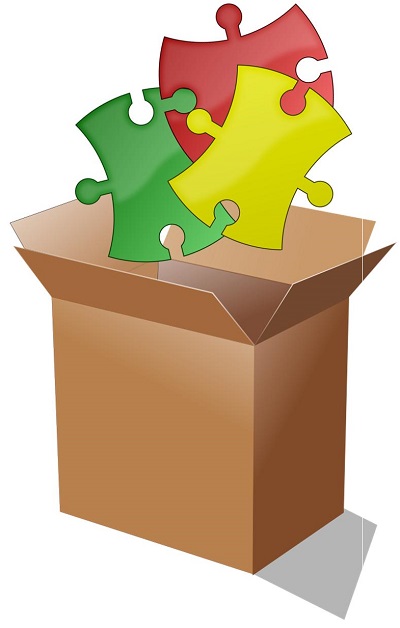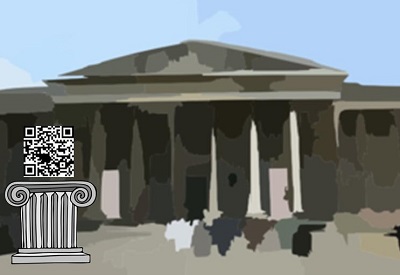PlayStation Vita now has an AR experience called “Open Me!”
PlaysStation Vita has now joined the consoles that are offering augmented reality games to their players, allowing the device camera to make it appear as though virtual elements are functioning within the real world.
This use of AR technology has already proven to be successful in the launch of the Nintendo 3DS.
Now, Open Me! is an augmented reality game that is available on PlayStation Vita and is being seen as one of the best attempts to show that using AR tech can give consumers and gamers a “good time.” This experience involves a number of different locked box puzzles, each of which has been rendered in 3D.
This augmented reality game uses an AR marker card to establish the position of the box in front of the player.
 Using the marker card lets the player use the Vita mobile device to be able to examine the puzzle box from any angle he or she would like. The purpose is to be able to identify the switch, button, or combination of those two things, which will allow the box to open. The earliest puzzles are the simplest, to allow the user to become used to the concept.
Using the marker card lets the player use the Vita mobile device to be able to examine the puzzle box from any angle he or she would like. The purpose is to be able to identify the switch, button, or combination of those two things, which will allow the box to open. The earliest puzzles are the simplest, to allow the user to become used to the concept.
Once the basics have been learned, the designs of the puzzle boxes become increasingly complex. Among the options are certain examples that force the player to “think outside the box”, such as a cuckoo clock that requires the user to catch onto the fact that he or she must set the time on the clock to match that in the real world in order to open it correctly.
That said, there are also some puzzles that aren’t quite taking full advantage of what an augmented reality game has to offer, in that the controls of the game are not quite up to the precision level that is required in order to be able to complete the puzzle. Beyond that, there are certain boxes that need two Vita players to work together on a shared puzzle to be able to open them up – which is great as long as the user knows someone else with the same device and skill level.
A free app in combination with the quick response codes are all that visitors need on their smartphones.
The Yamba Museum may be focusing on the past, but it is doing so with 21st century technology, with the development of QR codes as well as a free app that can be used on mobile devices such as smartphones and tablets that are frequently carried by visitors to the location.
The application allows the quick response codes to be scanned in order to enhance their experience.
All that a visitor must do in order to take advantage of the additional mobile features at Yamba, is to download a free app and scan the special QR codes. This allows them to be able to take a tour of the museum that involves access to additional images and interesting pieces of historical information that apply to what they are actually seeing in front of them in reality.
The QR codes have been printed onto stickers and free postcards that have been distributed around the area.
 Nearby shops and holiday accommodation sites displayed and shared the stickers and postcards that were available to visitors in Yamba for free. The alternative to scanning the barcodes was to visit the museum’s official website where the entire tour could be downloaded so that it could be accessed once the visitor headed out to the Yamba Museum.
Nearby shops and holiday accommodation sites displayed and shared the stickers and postcards that were available to visitors in Yamba for free. The alternative to scanning the barcodes was to visit the museum’s official website where the entire tour could be downloaded so that it could be accessed once the visitor headed out to the Yamba Museum.
The downloadable tour is broken down into six different parts so that the visitor can access them as needed or wanted. They consist of the Pilot Station, the Bay, the Flat, the Hill, the River Training Works, and the Museum. The design of the parts of the tour are all meant to be compatible with a mobile device and are easy to view and read while the gadget’s user is taking the Yamba tour.
Beyond smartphones and tablets, the app can be downloaded into desktops, laptops, notebook computers, and any other device with a platform that supports a standard HTML browser. It was developed by Jon Henry, a Port of Yamba Historical Society member, based on the information that was provided by John McNamara, a research officer. It also used some of the museum’s own historical photographs from its collection. Henry will be updating the History Tour application on a regular basis. The QR codes were created by the society’s member, Rob Knight.
 Using the marker card lets the player use the Vita mobile device to be able to examine the puzzle box from any angle he or she would like. The purpose is to be able to identify the switch, button, or combination of those two things, which will allow the box to open. The earliest puzzles are the simplest, to allow the user to become used to the concept.
Using the marker card lets the player use the Vita mobile device to be able to examine the puzzle box from any angle he or she would like. The purpose is to be able to identify the switch, button, or combination of those two things, which will allow the box to open. The earliest puzzles are the simplest, to allow the user to become used to the concept.
 Nearby shops and holiday accommodation sites displayed and shared the stickers and postcards that were available to visitors in Yamba for free. The alternative to scanning the barcodes was to visit the museum’s official website where the entire tour could be downloaded so that it could be accessed once the visitor headed out to the Yamba Museum.
Nearby shops and holiday accommodation sites displayed and shared the stickers and postcards that were available to visitors in Yamba for free. The alternative to scanning the barcodes was to visit the museum’s official website where the entire tour could be downloaded so that it could be accessed once the visitor headed out to the Yamba Museum.